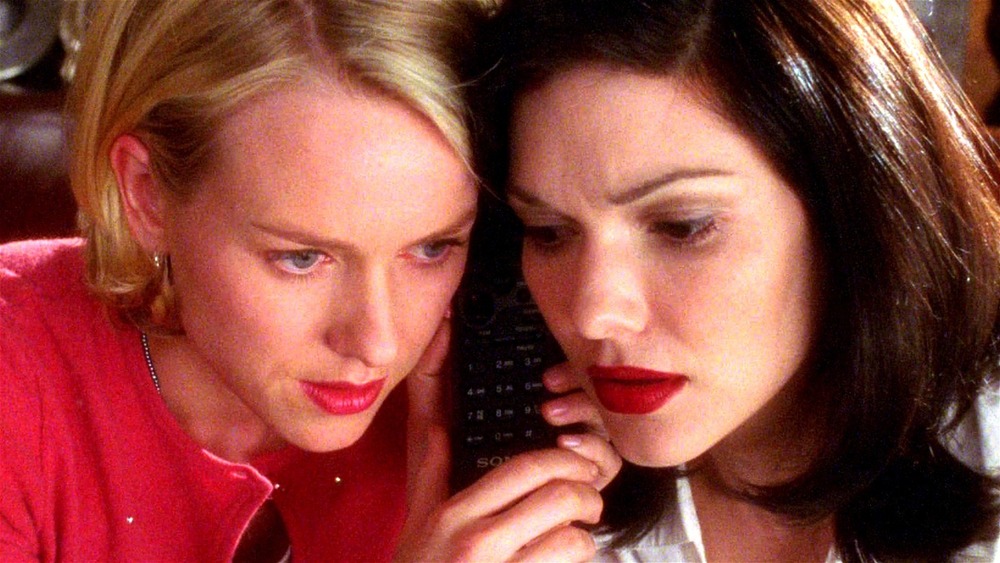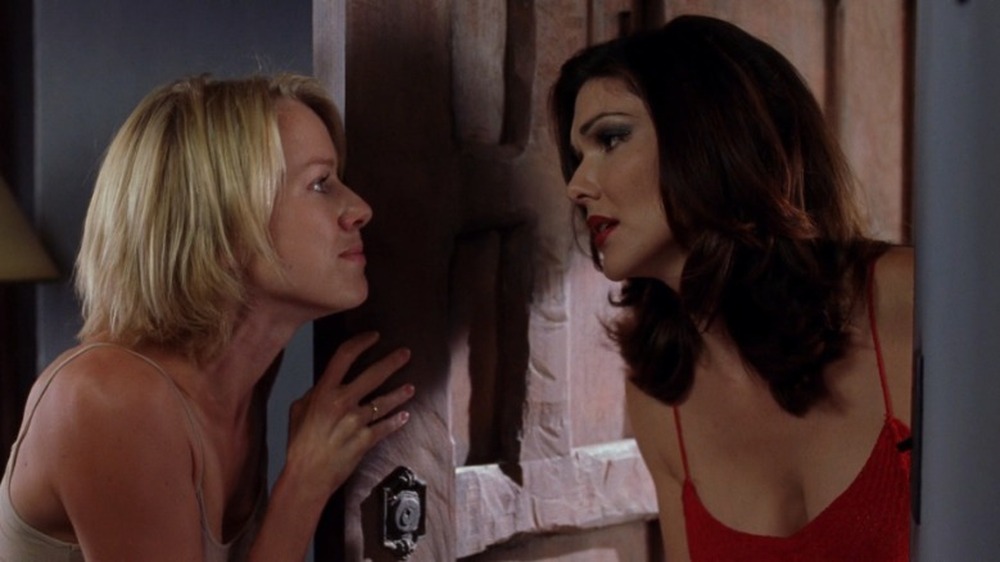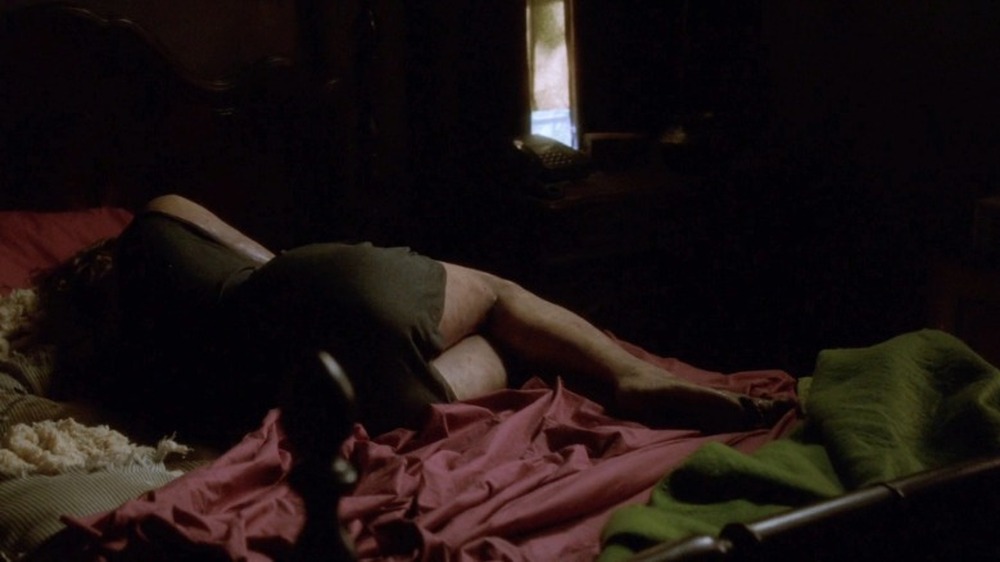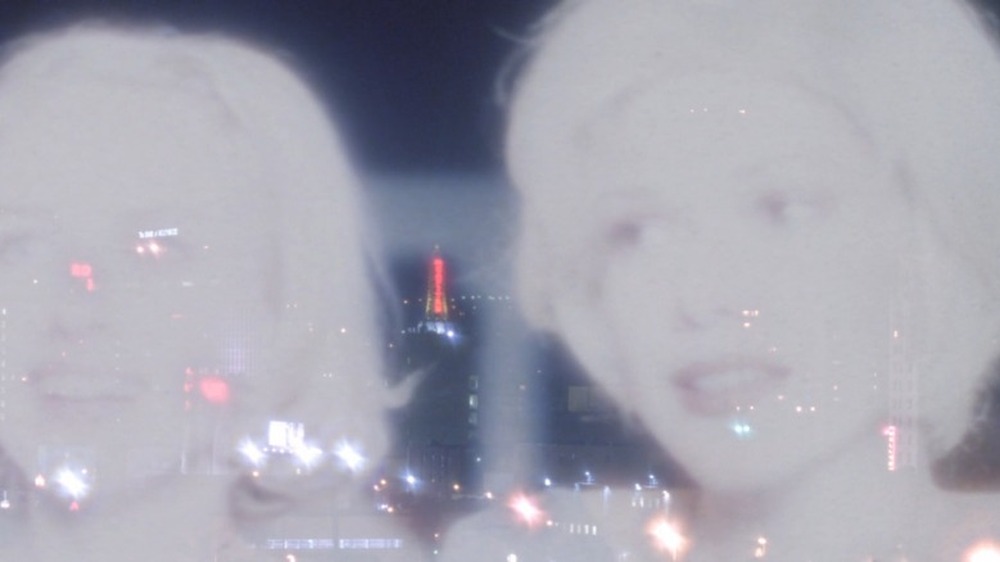The Ending Of Mulholland Drive Explained
Ah, David Lynch. Some artists resist rationalization, but rare are the ones so adamant about keeping their work ambiguous that they make a whole brand out of it. Just take a look at Darren Aronofsky twisting himself into pretzels trying to explain mother!, and memetic moments like Lynch's flat-out refusal to "elaborate on that" become all the more special — no other director is so committed to freeing audiences from his guidelines and letting them have shared ownership of his films' meaning. In fact, it's safe to bet that he's probably laughing at all of us penning "explainers" about them, as if such a thing were even doable.
Still, it's impossible not to give it a try. If you've seen Mulholland Drive, the dreamlike Hollywood tragedy that earned Lynch his third Best Director Oscar nomination, your first question as the credits rolled was almost certainly "What?" However, for a David Lynch movie, Mulholland Drive is mostly linear and easy to "understand," taking the shape of a conventional mystery procedural about an amnesiac woman (Laura Elena Harring) trying to remember her past with the help of a chipper Los Angeles newcomer (Naomi Watts). But that proximity to a "solvable" mystery only compounds the hankering to make sense of things when the movie takes a sharp turn into surreal chaos in the last 30 minutes. Was it a metaphor? Was it all a dream? Was it anything at all?
With Lynch, the deciphering is part of the fun. And so, with the caveat that no explanation can ever be objectively "right," Mulholland Drive invites us to come up with our own understandings of its madness, and to share them with each other, so that we can share the experience of the movie itself by extension. Let's get right on to it, then.
Mulholland Drive becomes more real, not less, during its ending
The central conceit of Mulholland Drive is to paint the ultimate picture of Los Angeles as a city of dreams and dreamers. The "normal" portion of the movie, in which Rita and Betty comb the city in search of clues about Rita's life prior to the car crash that took her memory, is deliberately exaggerated and artificial, mirroring the detachment from reality engendered by the entertainment industry. Everyone talks and acts like characters in a Hollywood movie, from Betty herself to the nice elderly couple she meets in the airport to the studio execs breathing down filmmaker Adam (Justin Theroux)'s neck.
As the two heroines delve deeper into the mystery, the quasi-satirical affect of these scenes gives way to brittle suspense. Rita's past holds innumerable dark secrets, which might spring to the surface and shatter their sunny Hollywood bliss at any moment. Adam's subplot, in which his attempts to make a movie are upended by the interference of executives in cahoots with the mob, acts as a meta-chart key of sorts, demonstrating the greed and corruption that lie beneath even the most beautiful movie fantasies. This tension climaxes in the Club Silencio scene, in which Betty and Rita are confronted with the fact that their whole world is an illusion, just as Rebekah Del Rio's singing attunes them to the naked human emotion that the fantasy had been keeping at bay.
From there, the movie segues into a different story that might be read as a mirror image, a parallel dimension, or even a concurrent Hollywood tale that just happens to star similar-looking people. In any case, the movie's point in having Watts and Harring switch to playing a depressed failing actress, Diane Selwyn, and the godlike superstar, Camilla Rhodes, who's the object of her ideations, respectively, is unmistakable. For Lynch, the conventional narrative was the fake part: this is the part that's real. Diane Selwyn's mental breakdown, in all its incoherent mishmash of ugly symbols, is what Hollywood truly comes down to: bottomless frustration, worshipped power, cast-aside queerness, dreams put through a meat grinder. The chaos caps off the order because the order is merely a cover-up, and Mulholland Drive wants to see it torn down.
Is all of Mulholland Drive a dying dream?
While Lynch discourages people from boxing the whole movie into a single "reading," his paradoxical assertions that Mulholland Drive actually tells a coherent story (via The Christian Science Monitor) have inspired some viewers to come up with an overarching theory — namely, that everything in Mulholland Drive leading up to the opening of the blue box is a dream, which Diane is having during her hallucinatory tailspin, just before shooting herself.
Even though "a dream all along" is one of the most hackneyed stock movie readings, it actually does make sense in Mulholland Drive's case. If we assume Diane's story — rejected by Hollywood, ditched and humiliated by Camilla Rhodes, forced to watch as her beloved ascends to stardom and marries a filmmaker — to be "reality," then many things in the movie's first 100 minutes suddenly snap into place. The pure, innocent, immediately successful Betty is Diane's idea of who she'd like to be. Rita is a version of Camilla that reciprocates her affection.
Then there are the finer details. Betty's "Aunt Ruth" is Diane's deceased aunt. The car crash happens on Mulholland Dr. because that's where Diane suffered the trauma of Adam and Camilla's engagement party. The woman referred to as "Camilla Rhodes" (Melissa George) is who the real Camilla kissed in front of Betty to spite her. Even the two subplots could be imagined by Diane: Adam's woes might be Diane's subconscious punishing him for marrying Camilla. The mysterious hitman (Mark Pellegrino) is, of course, the very same Diane hired to kill Camilla, bumbling around offing innocent people as an expression of her guilt. Finally, the rotting corpse Betty and Rita find at the height of their investigation is Diane imagining herself dead, alone, her body abandoned for days.
It's impossible to fully grasp Mulholland Drive
The "dream vs. reality" reading does make sense, to the point where Naomi Watts herself offered some corroboration at the time of the movie (via Interview Magazine). It makes so much sense, in fact, that watching Mulholland Drive that way feels almost wrong. Certainly the tidy blanket of dream interpretation can't cover the movie's many Lynchianisms. The all-powerful "Mr. Roque" who controls the industry from behind the shadows, for instance, doesn't appear to speak to Diane's dying projections in any meaningful way, nor does the terrifying man behind the diner — who, to make matters more complicated, exists in "real life," separately from Diane's imagination.
Speaking of which, though it's easy to accept the blue box as a magical MacGuffin, it's never possible to understand its true nature or why it factors into the two stories the way it does. Unless, of course, you view it as an interdimensional portal, with the man behind the diner as a supernatural guardian... but that completely muddles the oh-so-neat dream reading. And that's not even getting into the Club Silencio scene, which is so raw and powerful on its face that jamming its bizarre inner workings into a literary "explanation" would be cinematic heresy, never mind how abstract and inexplicable a moment it is.
In the end, even if the dream reading offers helpful context for Diane's story as an emotional journey, the real "meaning" of Mulholland Drive's ending depends primarily on what each viewer takes away from it. So if you liked the movie but didn't exactly "understand" its maddening final stretch, Lynch's advice to you might be the same he famously gave an English teacher who asked him to explain it: "You do know. For yourself. And what you know is valid."



